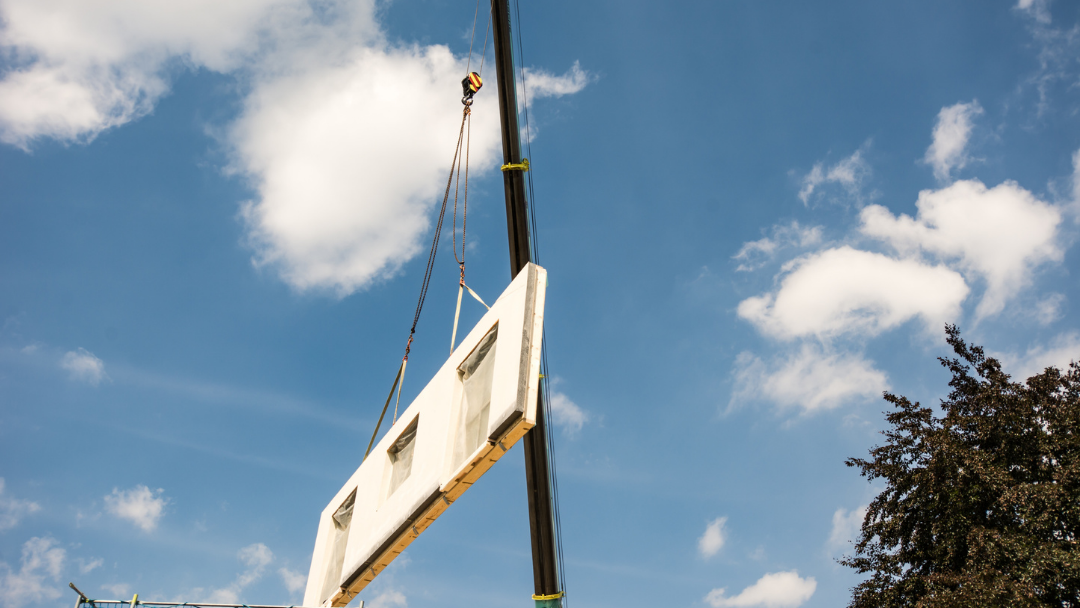The UK is moving towards more modern methods of construction (MMC), consequently, prefabrication and factory-based methods are increasingly being used. It’s nothing new, but we now see the need to deliver tighter build programmes, better cost control and increased quality. As many members know only too well though, our sector is facing a serious skills shortage, so could offsite construction be one answer?
Offsite construction allows parts of a building to be pre-manufactured in an environment suited for effective production, and it improves working conditions by taking construction processes to a clean, controlled environment, unaffected by the weather. Ideally, as many parts of the building can be finished to as high a level of completion as possible to minimise work on site.¹ Factory assembly of key project elements often means better, more consistent, standardised quality and faster delivery, which leads to improved efficiency, shorter construction times, reduced cost and much less waste.
The UK offsite market is rapidly growing with the Government instructing key departments to have a presumption in favour of offsite construction. The COVID crisis put a focus on the offsite sector – take the Nightingale Hospitals as an example, the site for the one at Excel London was visited by military planners and NHS England staff on 21 March last year and it was up and open by 3 April with first patients admitted on 7 April. This is an extreme example but without a doubt, offsite construction was key to the speedy delivery of the project.
Laing O’Rourke has just signed a £600m main works contract for the redevelopment of the Olympia exhibition site in London. Work is beginning on seven new buildings – including hotels, and a live music venue and, utilising
Laing O’Rourke’s Design for Manufacture & Assembly capability, the buildings’ walls and floors and a large proportion of their M&E services, will be manufactured offsite. Through the use of pre-manufactured systems (e.g., bathroom pods and other interior systems) offsite has potential to support productivity in the interiors sector.
FIS sees that earlier engagement with the supply chain to ensure buildability is critical and rather than value engineering individual projects, looking at multi-project partnerships with a consistent supply chain approach would
help create the necessary economies of scale to drive investment in offsite opportunities.
Programme savings
To find out how offsite construction impacts our sector, we spoke to Martin Lukac, Product Director at FIS member, Specwall Alliance, manufacturer of advanced factorymanufactured wall systems. We asked him firstly whether the presumption to offsite is starting to have an impact on the finishes and interiors sector and where are the rewards if we can increase offsite manufacture? He said: “We should be working to get over hurdles put in our way by COVID and lockdowns and, since our exit from EU, how we also deal with a reduced pool of operatives to cover the projects that lie ahead, while also improving the quality of delivery for the end user. In my opinion the only answer is offsite.”
“Change is happening, and for us, our biggest potential is in Specwall, an advanced wall system with in-built insulation, acoustic and fire ratings, that allows for the direct application of finishes including tiles, tape and jointing, plastering, spray plaster and paint to be applied directly onto it. “It’s an easy-to-use product with relatively simple installation methodology making it ideal for replacing traditionally messy labour-intensive systems such as traditional blockwork, risers, lift shafts, stair cores, drywall systems, concrete cores, stair-wells, and SFS. Because it is manufactured offsite, the system creates very little waste, which improves site logistics. Various steps in traditional build processes are eliminated, which allows for programme savings to be implemented while delivering a high quality finished product.
“We measure success of offsite construction by the projects where Specwall was specified – our clients use our product to save them time and reduce costs, because the process of installation is simplified and is reduced to simple tasks so that operatives can build quickly, and to a high standard. When the clients sees that all their walls are solid, high in fire integrity and acoustic performance, it gives them confidence. For me, success is knowing that the manufacturing process achieves a much lower carbon footprint compared to traditional ways of building.”
As suggested earlier in the article, we asked Martin how the presumption to offsite is already being captured in procurement decisions. He said: “Customers explore potential cost and time savings, programme integration and overall benefits of offsite manufacturing with us, however, we are now beginning to be asked more about carbon offset, smart pre-planning and integration etc.
“Contractors will benefit from having an open mind when it comes to new products and innovation,” he says, “they should make the time in the pre-construction phase to evaluate the new ways of building on offer and understand the benefits that each product or system can bring to a project.”


